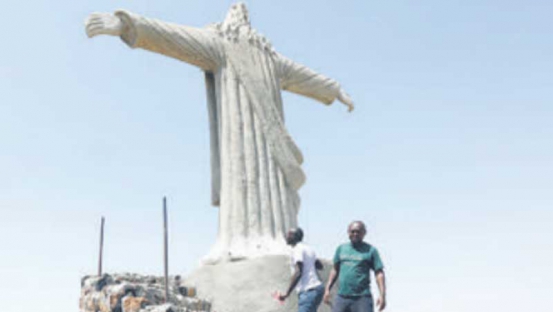×
The Standard e-Paper
Stay Informed, Even Offline

Known for its desolate images of hunger, poverty, marginalisation and everything else that depicts the shortcomings of Kenya, Turkana is the most unlikely of locations for one of the country’s most iconic but little known religious monuments.
Towering conspicuously on top of one of the many hills that overlook Lodwar town, the political seat of Turkana County, is a grey gigantic statue of Jesus Christ with hands spread apart.